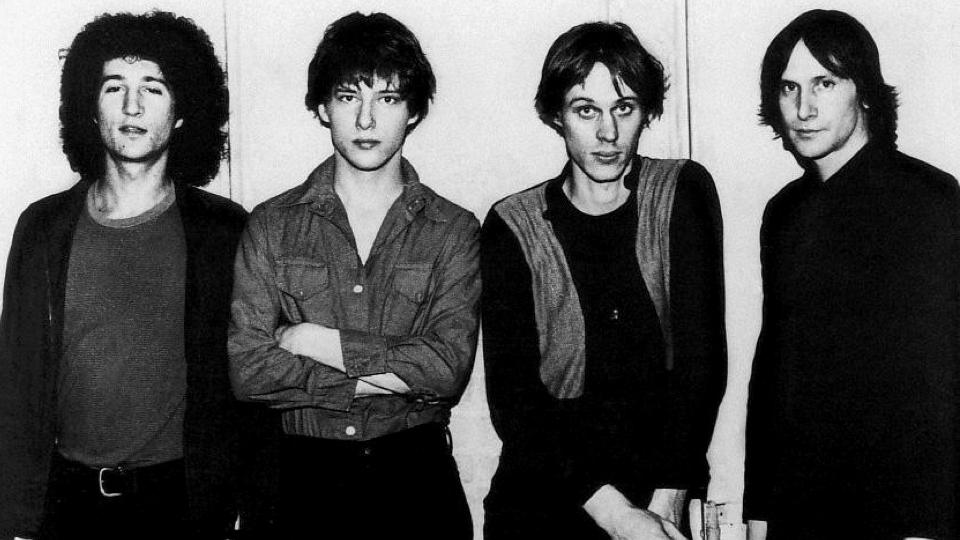In February of 1977, I remember reading in Creem Magazine that Tom Verlaine was born in Denville NJ. As a 17-year-old, this was an impossibility. Someone capable of his level of creative guitar playing could not have lived a mere 10 miles away from my childhood bedroom. But there it was in print…and there was the band Television, one of the most important bands of to 70’s New York punk movement. All knew that Tom Verlaine, who passed at age 73 in January 2023 in New York City, was the main talent of the band. Although limited to a niche audience, his work, mystique, and influence have sustained the test of time.
Born Thomas Miller, and later moving to Delaware, Verlaine would befriend punk rock icon Richard Hell (born Richard Meyers) as a teenager, and they would eventually work together in early versions of the band. They navigated their sound and career while working the tough New York City clubs that would become punk landmarks to achieve international notice.
The world of R&R music, especially punk, owes Verlaine the gift of acknowledgment. Instead of the notion that NOT playing well was a virtue, Tom was one of the first in the Bowery punk scene to bring an advanced musical technique to the fore. With the hindsight of five decades, it’s hard to consider Verlaine’s and Television’s music “punk.” Although they were far more on the Talking Heads’ side of the spectrum (rather than the Ramones side ), it is only when we put their sound up against the popular rock styles of the day (i.e., Queen, Frampton, and Eagles) that we see why Tom Verlaine’s band was branded as “punks.” They were gladly anti-arena rock.
As for his guitar work, it has been described as “slow country-style licks with punk vibrato.” Verlaine’s playing served as the dominant slice of the band’s sound picture, overshadowing his quirky vocal fashion. This style would soon be mirrored by David Byrne, Brian Ferry, and others. Verlaine’s powerful influence began to bloom, as those in the NYC scene knew and admired him….and somebody up there in corporate record land liked him too. Indeed, of the prominent national acts that would eventually come out of NYC punk clubs (i.e., CBGB and Max’s Kansas City all supported The Ramones, Patti Smith, Blondie, and Talking Heads) only the Ramones would be signed to a recording contract before Television.
Initially sought by several labels as early as 1974, Verlaine and the band held out for nearly three years to find the right partners. Eventually, they considered signing with Island Records, run by Chris Blackwell, the anti-corporate man who had brought the world Bob Marley, Nick Drake, and U2. But Verlaine resisted the label’s pick of Brian Eno to produce their first recordings, claiming that the producer’s sound found in the demos didn’t meet his expectations. Verlaine would say that “he (Eno) recorded them very cold and brittle.” The band then signed with Elektra Records and Verlaine went boldly forward, showing the audacity of a rookie, by self-producing their debut album, Marquee Moon.
His efforts served like a brick being thrown through the picture window of mid-70s Rock. Marquee Moon was embraced by listeners and critics tired of what was becoming formulated rock & roll. In a now-famous review in SOHO Weekly, (the first publication to print an interview with the Ramones) critic Roy Trakin wrote, “Forget everything you’ve heard about Television, forget punk, forget New York, forget CBGB’s … hell, forget rock and roll—this is the real item.”
Tom Verlaine’s writing proved he could develop hooky tracks with extended instrumental sections that fought off any cursory punk formatting. It was clear from the album that Tom and the band refused to be classified. Marquee Moon unexpectedly did not reach commercial success in the United States, doing far better in the UK (#28) and other parts of Europe. Rolling Stone’s 2003 list of 500 Greatest Albums of All Time had the album at #128.
Television would record a follow-up album in 1978, Adventure, but would be a universal disappointment for both fans and critics alike. It would be the last album recorded by the original members and Verlaine would then progress to other projects. A year later Tom would record his first of 10 solo albums (including his final effort Around, in 2016). He invested much of his subsequent professional years as a journeyman guitarist contributing to various projects with Patti Smith, Jeff Buckley, Smashing Pumpkins and performing as a member of the supergroup the Million Dollar Bashers featuring Sonic Youth musicians and Nels Cline of Wilco among others.
Tom Verlaine brought important colors to the mosaic of Rock and Roll music. Those who experienced his music knew his Television was not black and white.
-Steve Valvano
Photo: Television (l-r) Billy Ficca, Richard Lloyd, Tom Verlaine, Fred Smith (Roberta Bayley. Distributed by Elektra Records via Wikimedia Commons)





Marquee Moon is indeed a classic. RIP Tom. But one note – Roxy Music formed in 1970 and their first album came out in ’72. Bryan (not Brian) Ferry hardly “mirrored” Tom’s “quirky vocal fashion.”
OK, I’ll accept that, perhaps it was the other way around… Byrne and others (Like Ocasek) certainly mirrored his vocal style directly or indirectly….thanks for your interest! -SV